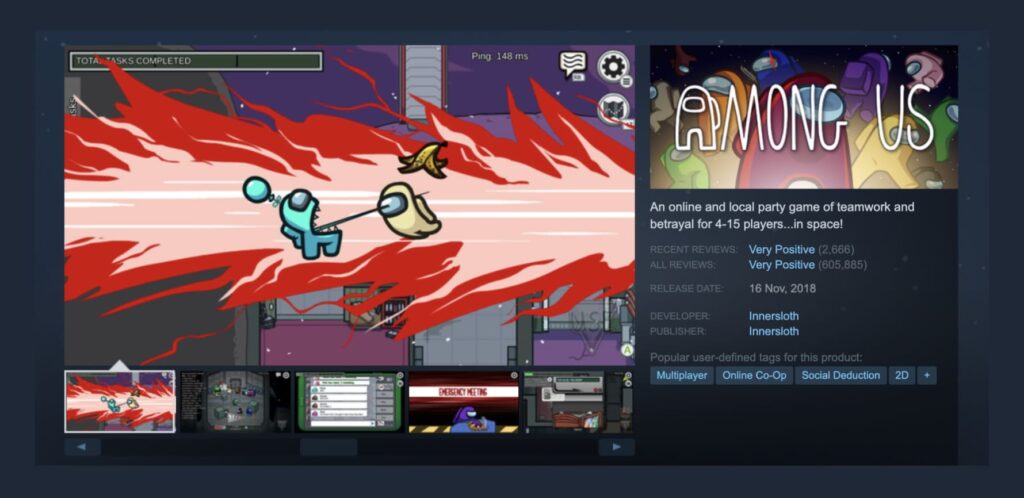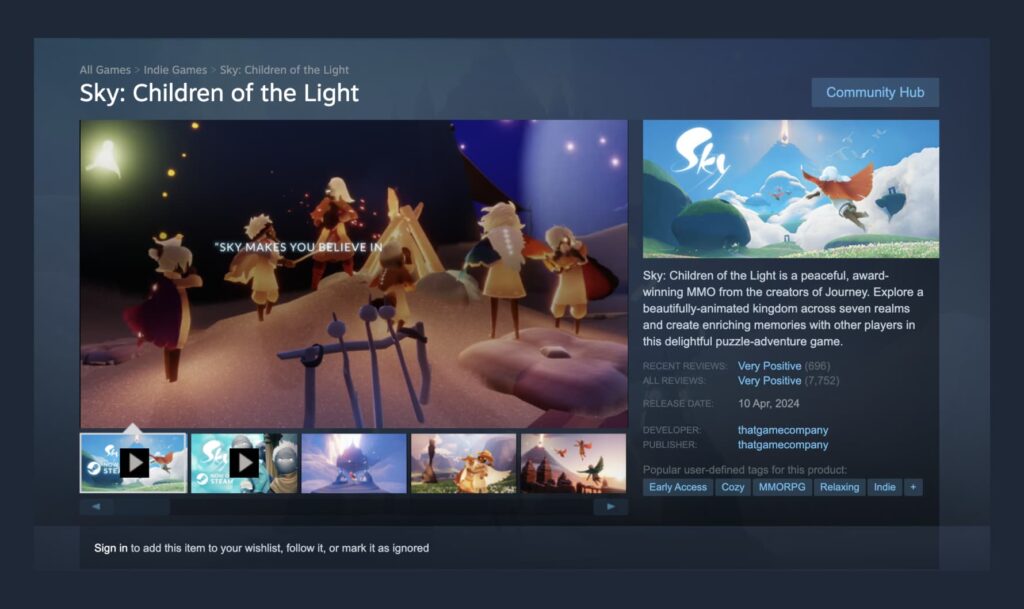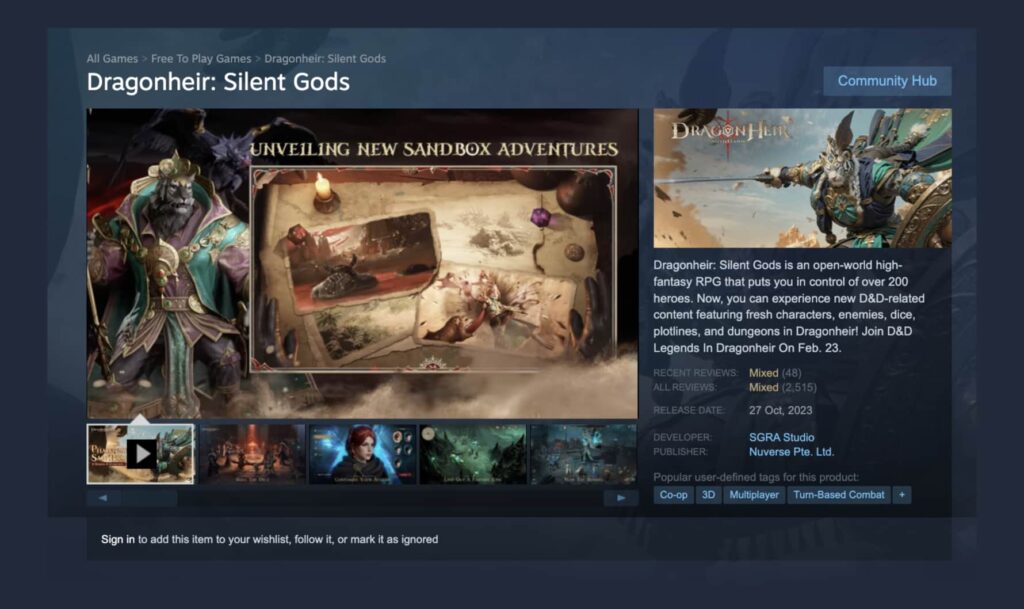The Ultimate App Marketer’s Guide to Steam: From Publishing to Optimization
 Anastasiya Starovoytova
Anastasiya Starovoytova  Anastasiya Starovoytova
Anastasiya Starovoytova If you want your mobile game to gather steam, you may need — pardon the tautology — to put it on Steam.
Wargaming did it. thatgamecompany did it. Many others intend to do it.
Making this leap may feel a bit intimidating. After all, to get your mobile game on Steam, you’ll need to ensure compatibility with PC/Mac and prepare your game’s Steam store page. Can this quest take time? Sure. Are the rewards worthwhile? They are.
So, what app marketers should know about publishing and optimizing games on Steam? Let’s explore it together.
Steam attracts 69 million users every day. Since Steam engages such a big community of PC gamers (who may never played your game on mobile platforms before), it’s a good opportunity to draw their attention to your title.
Here are just a few facts and figures to consider releasing your game on Steam:
These facts prove the release on Steam is a smart investment into the future of your mobile game.
The amount of the Steam direct product submission fee is $100 per game.
Mind that you can even get this money back from Steam as soon as your game earns your first $1,000 on the platform.
Now let’s take a closer look at publishing a mobile game on Steam.
The first step in bringing your mobile game to Steam is ensuring it’s compatible with PC and Mac platforms. As an app marketer, you may feel your involvement isn’t necessary at this stage.
We beg to differ.
A great player experience is at the heart of success in any game. Since mobile and PC games have their differences, you need to think about them right from the start.

Consider discussing the following challenges with your teammates:
The first step is always the hardest one. Your insights into player behavior are crucial even at this early stage. Not to say that sorting these things out will help you in marketing your game on Steam later on.
As soon as you’re done reworking your mobile game for PC, you’re free to prepare the ground for your publication. Here’s how to get started with creating a Steamworks account:
Setting up a Steamworks account is all about being attentive. There are several steps you are to complete, but they’re not that difficult.
Ah, this is truly a marketing moment. Making a Steam store page appealing is, to a certain extent, similar to ASO managers’ daily grind. Your task is to make sure potential players will be intrigued by your page enough to add the game to their wishlists and eventually buy it.
A Steam page consists of several key elements you need to take care of. Let’s go through their list first.

Basic Information: This includes the game’s title, developer and publisher names, supported platforms, system requirements, and external links.
Short Description: A brief overview of the game, outlining its setting, gameplay, and unique features. This is where you introduce the game to the public for the first time.
Mature Content Settings: Information regarding any mature content in the game.
Sky: Children of the Light emphasizes mesmerizing visuals with its Steam screenshots
Screenshots and Videos: Visual assets like screenshots (usually 5 or more) and trailers that showcase the game’s graphics and gameplay.
The ‘About This Game’ section: a longer description of your game. The text may contain bullet points and different images, including GIFs.
Capsule Images and Library Assets: These are the visual elements, such as the game logo and promotional images, that appear in various places on Steam, including the store page and users’ libraries.
Tags and Categories: Descriptive tags that help categorize your game. They make it easier for players to find in searches and recommendations. Want to increase search visibility? Make the most out of these elements.
Reviews: If your game was praised by the media or Steam users, you can showcase their reviews in this section to build credibility around your project. Doing this isn’t necessary and, in any case, Steam shows recent user reviews at the end of your page. If Steam curators have tested your game, you’ll also be able to show a ‘What Curators Say’ section.
Community Hub and Support Information: Links to your game’s community hub, where players can discuss the game, and support information for player assistance.
On your Steam page, you can also state whether your game has early access or is planned to be launched on a particular day.
Filling out your Steam page isn’t the end of marketing activities.
While there are many ways of promoting a game, we’ll concentrate on those directly connected with Steam — and especially those aimed at expanding wishlists.
Steam communities shouldn’t be an afterthought on your part. Participate in discussions and respond to reviews, even if they are negative.
First, it can help you identify shortcomings in your game. And second, you can build a good reputation among gamers. Positive interaction with the community also increases your chances of being noticed by Steam curators.
Giveaways can be an effective way to grow your wishlists. You can host your own giveaway if you have a good following, or ask influencers to host it for you. Offer prizes like Steam gift cards, game keys, or popular in-game skins to attract real and relevant players. Collaborate with influencers who specialize in hosting these types of giveaways to maximize your reach.
Smaller, targeted giveaways may be more effective and less risky than mass giveaways, which could devalue your game.
Steam curators are typically aficionados of a particular genre and have a huge following on Steam and social media. They create lists of recommended games, often based on their specific interests or expertise. These recommendations are visible on the Steam store and can influence gamers’ decisions to wishlist or purchase games.
When sending keys to them, include a personalized message to increase the likelihood of a response. Curator reviews can add credibility to your game and improve visibility on Steam.
Steam events and festivals attract millions of users actively looking for new games to discover. Participating in these events increases your chances of being noticed by potential players.
During Steam events, games are often featured on special event pages or promoted through curated lists, which can lead to a significant rise in wishlists and sales. Many Steam festivals allow developers to showcase free demos of upcoming or current games. This gives players a chance to try your game risk-free, potentially turning them into buyers if they enjoy the experience.
Keymailer is a useful tool that connects verified YouTubers and streamers with developers. Upload keys for your game and let influencers request copies. It’s an easy way to get your game into the hands of people who can promote it to their audiences.
The platform also shows you the size of each influencer’s following, so you can gauge potential exposure.
Combine these strategies with marketing activities outside the platform to see your game gaining popularity. And don’t forget about adding UTM parameters to the URL links to see how these campaigns perform.
Just like the product page on Google Play and the App Store, your Steam page needs regular maintaining and updating.
Here are some Steam optimization best practices and life hacks to consider.
The game name is crucial for visibility on Steam.
Ensure your title includes relevant keywords that reflect the core gameplay to help users find your game in search results. Aim for a name that is not only branded well but also contains key terms related to your game’s genre and style.
Research competitor titles and user search habits to uncover useful keywords. For localized audiences, like German-speaking users, consider translating the name to fit local search terms.
The short description is a quick pitch for your game and should focus on gameplay. Keep it under 300 characters, make it action-oriented, and include relevant keywords to improve discoverability.

Highlight core gameplay elements and avoid irrelevant details. Adding a CTA, like encouraging players to wishlist your game, can further boost engagement. And don’t forget to mention the game’s genre and unique features upfront.
The long description provides detailed information for users who are still uncertain about the game after viewing screenshots and trailers.
Avoid filler information, and focus on gameplay, mechanics, and what makes your game unique. Integrating keywords and structuring the description with visual elements (GIFs, videos) can help communicate your game’s features more effectively. Adding a CTA and placing key information at the top can grab attention.
Choose your top five tags wisely, as these are heavily weighted for recommendations. Avoid overly broad tags like “Action” or “Free to Play” and opt for more specific ones that distinguish your game from others.
Regularly review and update your tags. Integrating localized tags can help attract players from different regions.
Screenshots are one of the first things users will notice, so ensure they showcase core gameplay, the user interface, and a variety of environments.
Dragonheir: the Silent Gods smartly showcases the character customization options as well as highlights the game has a roll-the-dice mechanics, appealing to DnD fans
Use the first few screenshots to highlight key game mechanics and features to keep potential players intrigued. Ensure all images are in landscape format, and consider adding subtle calls to action, like “Add to Wishlist.”
Your trailer should quickly get to the point—start with exciting gameplay within the first few seconds.
Focus on showing key game mechanics and features with short, impactful shots, as users tend to skip through. Always include a clear call to action at the end, encouraging players to wishlist or download the game. Limit the number of trailers to two for focus.
The capsule image should be simple yet impactful. Avoid overloading it with details; the game’s logo and a clear visual theme should be prominent.
Ensure the logo is legible, even at small sizes. Consider localizing the image with cultural or seasonal references (such as using Japanese landmarks or colors for players in Japan) to make it more appealing to specific audiences. Including a CTA on the image can increase wishlist additions or purchases.
Here is a table summarizing the dimensions for each graphical asset required on a Steam Store page, Steam Library, Steam Community Hub, and Steam Developer Pages.
| Section | Graphic Asset | Dimensions (px) | Notes |
| Steam Store Page | Header Capsule Image | 460 x 215 | |
| Small Capsule Image | 231 x 87 | ||
| Main Capsule Image | 616 x 353 | ||
| Vertical Capsule Image | 374 x 448 | ||
| Page Background (optional) | 1438 x 810 | ||
| Steam Broadcast Banner | 155 x 337 | ||
| About Section Banners | 616 x (your choice) | Animated GIFs allowed | |
| Screenshots | 1280 x 720 or 1920 x 1080 | Minimum of 5 screenshots | |
| Steam Library | Library Capsule | 600 x 900 | |
| Library Hero | 3840 x 1240 | ||
| Library Logo | 1280 x 720 | ||
| Steam Community Hub | Community Group Header Image | 444 x 208 | |
| Community Icons | 184 x 184 | ||
| Client Icons | 32 x 32 | ||
| Steam Developer Page | Developer Logo | 184 x 184 | |
| Background Image | 1500 x 220 | Can be an animated GIF |
Remember to optimize image sizes and ensure logos are readable at smaller sizes, especially for assets like the capsule images.
Steam’s popularity isn’t going to fade away. Why not tap into it?
The process may require adapting your game for PC/Mac, setting up your Steamworks account, and optimizing your store page. However, the rewards in terms of exposure, community engagement, increased session lengths and sales make the effort worthwhile.
SplitMetrics Agency can be a key partner in ensuring your mobile game thrives on Steam. Our Steam Store Optimization services are designed to enhance visibility, drive organic traffic, and improve conversion rates through a well-rounded approach.
